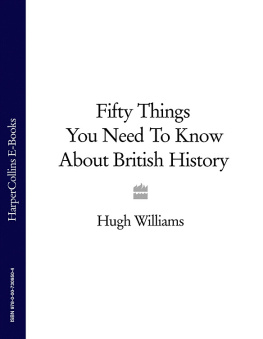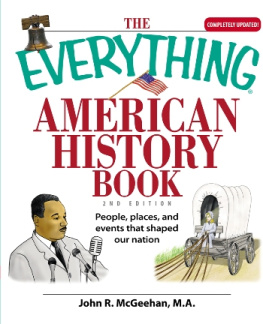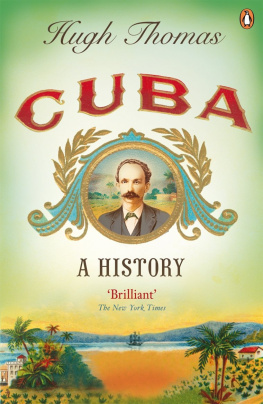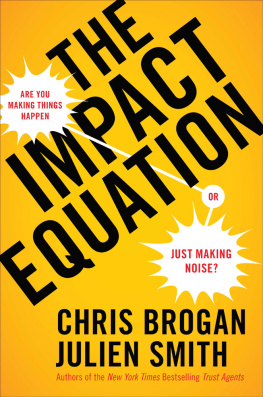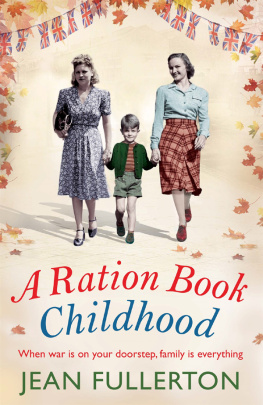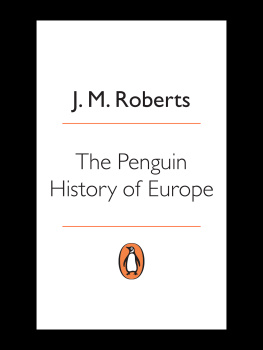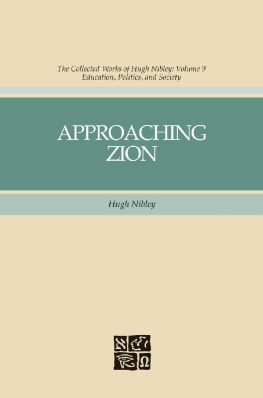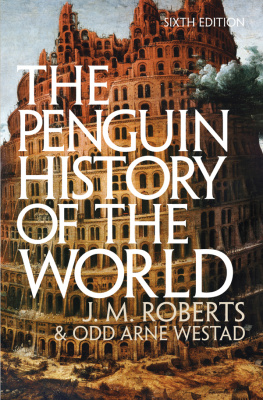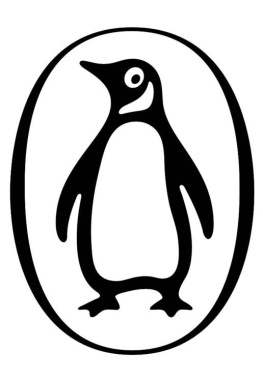PENGUIN BOOKS
THE PENGUIN HISTORY OF THE UNITED STATES OF AMERICA
Hugh Brogan was educated at Repton School and Cambridge. He worked on the Economist for two years before his first visit to the United States as a Harkness Fellow in 1962. He was a Fellow of St Johns College, Cambridge, for the period 196374 and thereafter, until his retirement in 1998, taught at the University of Essex (he was R. A. Butler Professor of History for the period 19948). His works include a study of Alexis de Tocqueville, Tocqueville (1973), The Life of Arthur Ransome (1984), Mowglis Sons: Kipling and Baden-Powells Scouts (1987) and Kennedy (1996). His most recent work is Signalling from Mars: Selected Letters of Arthur Ransome (1997).
HUGH BROGAN
The Penguin History of the United States of America
Second Edition

PENGUIN BOOKS
PENGUIN BOOKS
Published by the Penguin Group
Penguin Books Ltd, 80 Strand, London WC2R 0RL, England
Penguin Putnam Inc., 375 Hudson Street, New York, New York 10014, USA
Penguin Books Australia Ltd, 250 Camberwell Road, Camberwell, Victoria 3124, Australia
Penguin Books Canada Ltd, 10 Alcorn Avenue, Toronto, Ontario, Canada M4V 3B2
Penguin Books India (P) Ltd, 11 Community Centre, Panchsheel Park, New Delhi 110 017, India
Penguin Books (NZ) Ltd, Cnr Rosedale and Airborne Roads, Albany, Auckland, New Zealand
Penguin Books (South Africa) (Pty) Ltd, 24 Sturdee Avenue, Rosebank 2196, South Africa
Penguin Books Ltd, Registered Offices: 80 Strand, London WC2R 0RL, England
www.penguin.com
First published as The Longman History of the United States of America by Longman 1985
Published as The Pelican History of the United States of America in Penguin Books 1986
Reprinted as The Penguin History of the United States of America in Penguin Books 1990
Second edition published by Longman 1999
Published in Penguin Books 2001
Copyright Addison Wesley Longman, 1985, 1999
All rights reserved
The moral right of the author has been asserted
Except in the United States of America, this book is sold subject to the condition that it shall not, by way of trade or omerwise, be lent, re-sold, hired out, or otherwise circulated without the publishers prior consent in any form of binding or cover other than that in which it is published and without a similar condition including this condition being imposed on the subsequent purchaser
ISBN: 978-0-14-193745-8
Contents
List of Maps
A Note of Thanks
This book has been fifteen years in the making rather more, if the time taken for printing it is allowed for and so my first thanks must be to my publishers, who have shown exemplary patience (they were expecting something much shorter, much sooner). Next I must thank my two academic homes, St Johns College, Cambridge, and the University of Essex, not only for paying my salary but for providing excellent conditions for the pursuit of learning. One of the great advantages of belonging to such institutions is that at points of difficulty you can always turn to a colleague for reliable advice; an invaluable circumstance.
In so long a period, during which I have tried to master so enormous a subject as the history of the United States (I may say I grew rather weary of being told what an easy job I had, since America was so new a country), almost everything I have done or learned seems to have contributed to the making of my book; and I have benefited directly from innumerable conversations with learned and sharp-minded historians, both British and American. It would seem to claim too much if I were to name them all here: I hope I am not a name-dropper. Better to say, in general terms, that I have profited hugely from many lectures, seminars, classes, articles, monographs and stray encounters which, though uncited, have helped to strengthen this history in innumerable ways. I have learned a lot from my pupils, both through discovering what they really needed to know and (when they asked me questions I couldnt answer, or, in their essays, included information or references that were new to me) where my own ignorance lay. I have also benefited from various visits to the United States, from discoveries in academic libraries there, and from opportunities to get to know the various regions of that immense country. So I ought also to name the University of Chicago, Lewis and Clark College (Portland, Oregon), the University of Washington (Seattle) and the University of Tennessee, all of which greatly assisted my studies and my understanding of America, in return, at most, for a little summer teaching. And I must name the men who got me to the places: John Hope Franklin, Don Balmer, Dwight Robinson and Milton Klein, my good friends. I am also well aware of how much this book owes to the two years which I spent as a Harkness Fellow at the Brookings Institution and at Yale between 1962 and 1964. Last but not least, indeed above all, I and my book are immeasurably indebted to my father, the late Denis Brogan. It will soon be ten years since he died, but the longer I live the more I am aware of how much I owe him; in particular I know that it was he who made me an Americanist, and he who taught me all the most important things I needed to learn about the United States. I wish he could have lived to see this result of his teaching (if only because he would have told me very frankly where it fell short); his memory and example have been with me ceaselessly as I worked at it.
Various people at various times read all or part of my drafts, and whether by correction or encouragement helped me along. I end this note by naming them with all gratitude: J. R. Pole, H. C. Porter, A. F. Rowlands, Rupert Sheldrake, Jill Steinberg, Howard Temperley, Hugh Tulloch, Alexander Tusa, Fiona Venn and Stuart Woolf.
Wivenhoe, 25 July 1983 | Hugh Brogan |
Note for the Secound Impression
I am most grateful to the reviewers and correspondents who have enabled me gradually to correct various errors that disfigured the first edition of this history.
Wivenhoe, 12 November 1986 | H.B. |
Note for the Revised Edition
History does not stand still, as I was well aware when this book was first published in 1985, but neither I nor anybody else foresaw what radical changes it would bring forth in the next few years. The end of the Cold War was a gigantic series of events, the consequences of which are still making themselves felt; we must therefore wait for anything like a full understanding of its importance. But today, a full decade after the Soviet Union and its empire began to break up, it is none too soon to add to my chronicle a chapter recounting the last years of the Cold War, and to revise earlier chapters in the light of our new knowledge. To push the tale further, into the 1990s, would be possible but not really useful: the pattern underlying events is not yet clear, and in a book of this kind the pattern is what matters. So my narrative now goes down to the retirement of Ronald Reagan but (except incidentally) no further.
I have maintained my division of American history into five main epochs, but have changed the label attached to the last: once called The New World, it is now called The Superpower. This reflects my conviction that the central theme of world history in the twentieth century, for good and evil, has been the emergence of the United States as a power and civilization that surpasses, in its reach and strength, all empires of the past, and that those who begin their analyses at other points with the Russian Revolution, say, or the collapse of the old colonial empires are profoundly mistaken.
Next page


